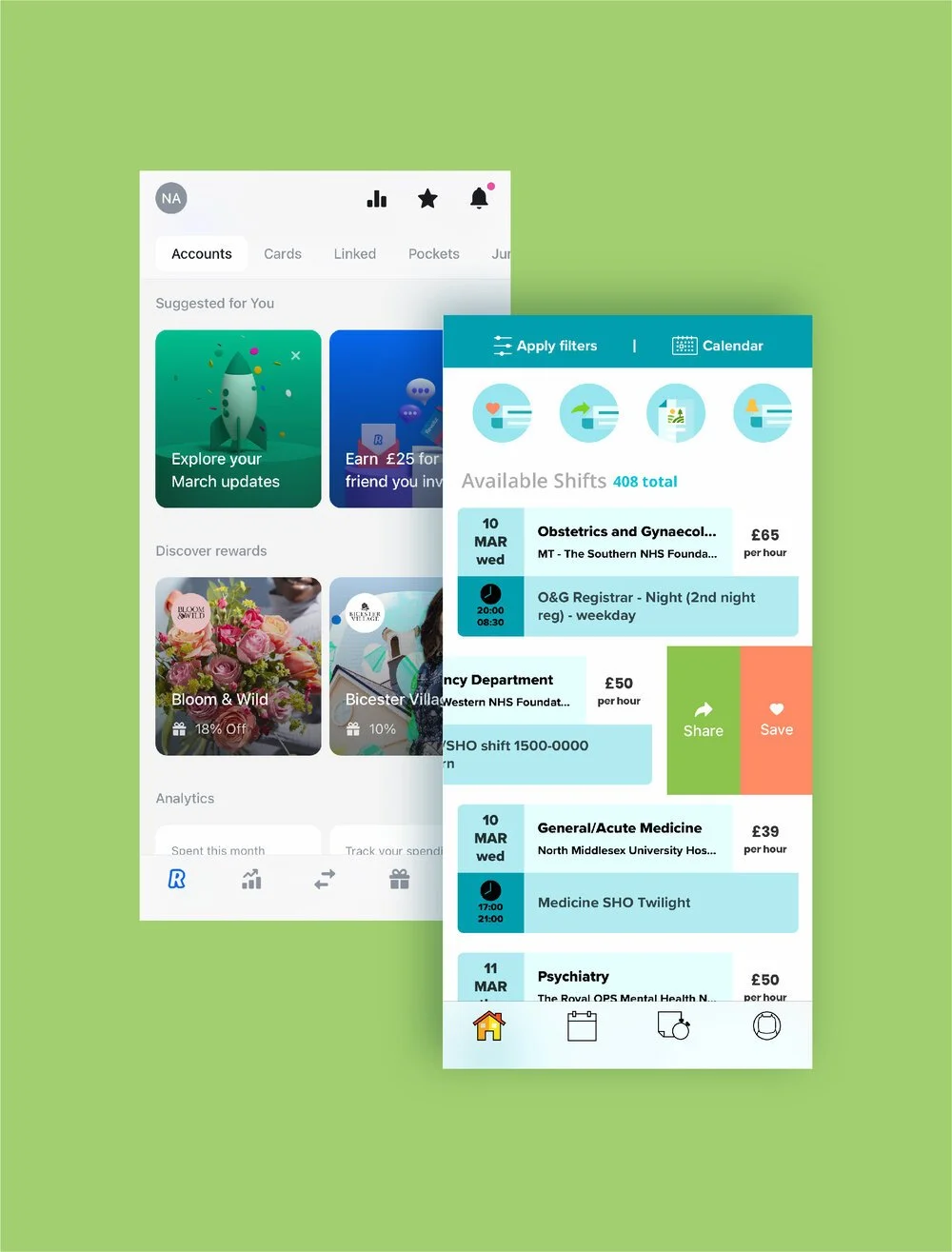Consumer apps that inspire us to create beautiful user-friendly software
Dr Nicholas Andreou,
Co-Founder
In 2020, the average person in the UK spent almost 3 hours a day on their smartphone. A 30% rise from the previous year. Whilst much of this is consumed by social platforms, a vast amount is spent downloading, using and reviewing hundreds of mobile apps. As the demand for e-commerce, online communication and virtual entertainment continues to skyrocket, as does consumer expectations for streamlined digital software.
Brands worldwide are beginning to recognise the appeal of the consumer app. Employees are accustomed to using cutting-edge digital platforms to communicate and organise their personal life. Therefore there are expectations to uphold when it comes to the presence of technology in the workplace.
The adoption of such beautifully-designed innovations demonstrates an organisation’s commitment to improving job efficiency and has a positive effect on employee engagement and productivity. This is key in healthcare, where app-based clinical communication is proven to speed up and improve patient care, saving crucial time for NHS workers.
At Locum’s Nest, we design our apps with a user-centric philosophy. Much like consumer applications, our technology uses techniques that go beyond functionality to uphold an engaging user experience. After all, our doctors and nurses are tech-savvy and deserve more than basic design - the process of booking shifts should not be boring.
Below we share our favourite consumer apps and the features that inspire our leading Collaborative Bank app design.
Nike SNKRS App
For sneaker enthusiasts around the world, Nike’s SNKRS app is a must-have application. Users benefit from insider access, exclusive releases and the latest launches in an online space that combines community spirit with transactional features.
Fostering a community is a vital consideration in successful app design. Whilst this leads to increased loyalty and interaction for B2C brands, a culture of engagement is equally - if not more - important for the workforce. The NHS People Plan is committed to nurturing a culture of active participation in the improvement of its wellbeing. To be successful, this must translate into digital with online platforms and mobile apps inspiring collective collaboration.
At Locum’s Nest, our digital staff bank apps are more than a workforce solution. Colleagues can connect through in-app communication from announcements to staff surveys. By reaching NHS workers directly on their smartphones, users can form a tightly knit social network within their organisation.
Revolut
Similar to healthcare technology, the formal nature of finance has often led to purely functional applications. But through the clever use of micro-interactions, animations and fully integrated branding, Revolut has succeeded in pioneering a fully immersive experience for its users. In other words, this beautifully built app has made banking fun.
We use similar techniques in our apps to help users interact with shifts in a much more fluid way. A swipe to the left shares a shift with colleagues or saves it for future reference. Users can also access specially curated deals, leave honest autonomous feedback and view in-app articles published directly by hospital staff. By designing with compassion and empathy, this results in a more meaningful user experience, which is often neglected within digital healthcare solutions.
Stagedoor
For fans of the theatre, Stagedoor immerses users in London’s Westend through a comprehensive guide, thousands of reviews and a seamless booking process. But what makes this app stand out is a set of clever interaction techniques that personalise the user experience.
Stagedoor’s considered design invites users to create a smart wishlist of shows as well as a logbook of seen performances. This bespoke feature is similar to the inspiration behind Locum’s Nest Digital Passport technology. Here users can store necessary documents in a safe, digital vault that results in a pre-filled professional passport. Shifts can additionally be added to a personal wishlist with one simple swipe - allowing users to access their preferred choices and be notified when one is at risk of being snapped up.
Grammarly’s AI-powered assistant perfectly demonstrates how consumer applications can be seamlessly integrated into users’ existing products - a technique that is no easy feat. From Gmail to LinkedIn, the free writing app is available as an extension to any platform making itself accessible to a vast pool of users without interrupting the experience flow.
This example of streamlined integration is a necessary step for achieving interoperability in healthcare, the way in which different software platforms communicate data between one another. When a user flicks from one app to the next, data needs to be automatically transferred. Yet this is still a common barrier for the NHS.
For this reason, we developed Link, the nation’s first interoperability hub for the NHS. Alongside leading software partners including Earnd, Allocate and Rotageek, we are able to integrate all core systems into one function from rostering and payroll to bank services. This in turn not only increases functionality and improves patient care; it has financial benefits for the NHS and our doctors too. Find out more about our commitment to interoperability at Locum’s Nest.
Grammarly
Grammarly’s gamification is also what makes this app stand out. Users are scored on their weekly grammar progress - an aspect that encourages learning and engagement with the application. This feature is known for increased interaction and is used throughout our software, both on our mobile and web apps.
In summary
Business (B2B) platforms must experience a monumental transition to keep up with digital consumer applications. Whilst there will always be a place for functional traditional software, workforce solutions will need to keep up with the design innovations led by branded mobile apps in order to retain and attract an engaged workforce.





